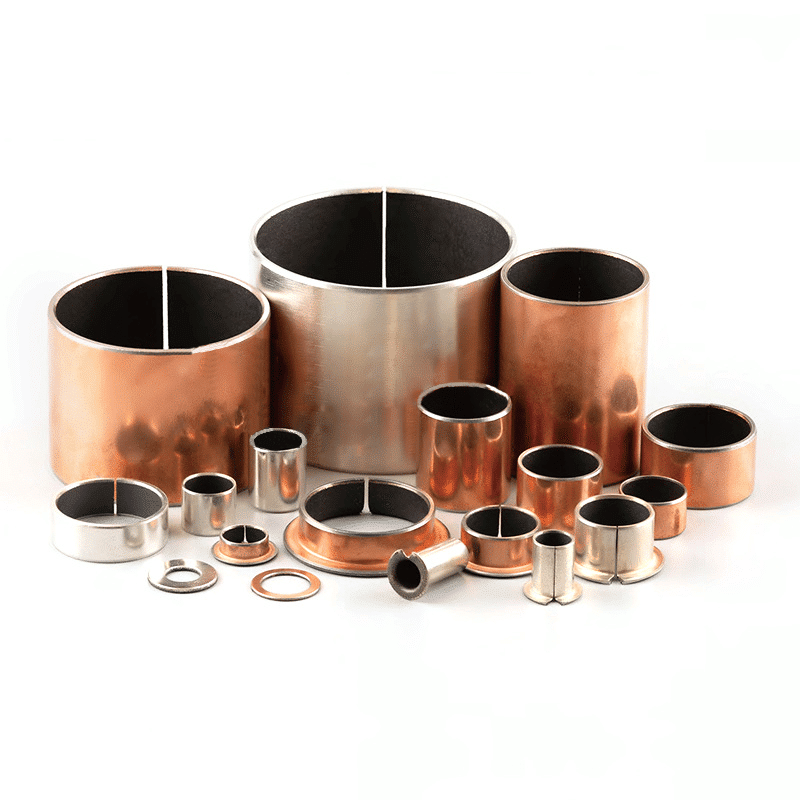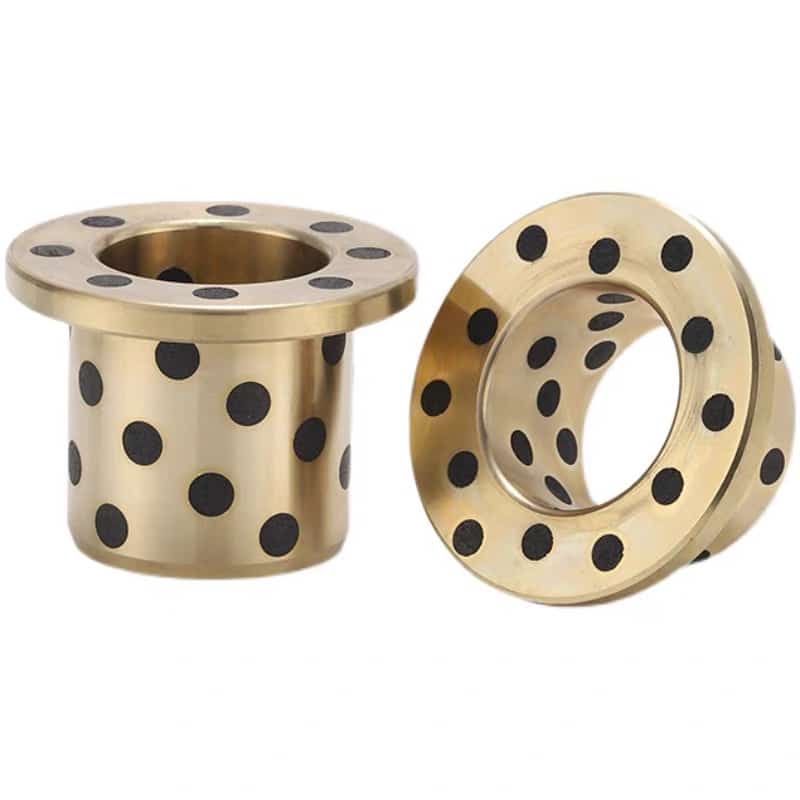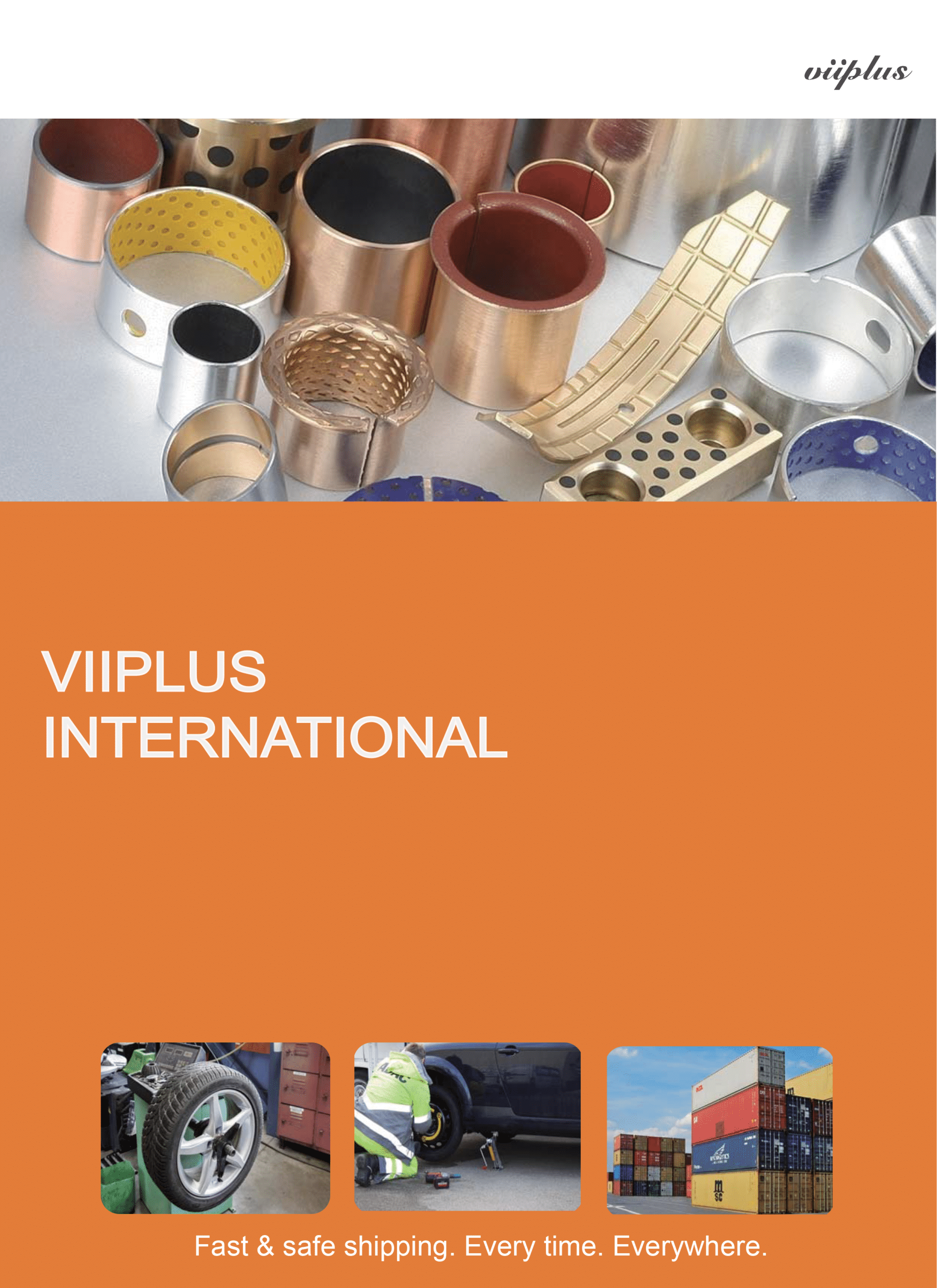flanged bearing bush
Bearings and Bushings for the Future: Precision and Customization: Our company, in bearing engineering with decades of experience, designs and develops high-precision self-lubricating bronze bearings & plain bushes. We offer a wide array of sliding bearings tailored to meet specific needs. Renowned for our expertise in custom bronze bushing and slide plate solutions, we provide an expansive selection of bushing metal alloys. Contact us today to benefit from unparalleled services at competitive prices.
flanged bearing bush
Flanged bearing bush – what you need to think about
If you use flanged bearings bushings in your application,
some design considerations will help avoid bearing damage.
Experience
Discover the Benefits of Self-Lubricating Flange Bushings from China. Order Today!
Bearing Solutions
Get the Best Quality Self-Lubricating Flange Bearing Bushings from China. Order Now!
Online Support
Stay Ahead of the Competition with Self-Lubricating Flange Bushings from China. Contact Us!
Self-lubricating bushes in various materials
Various self-lubricating flange bushes material
Metallic, self-lubricating flange bushings come in four main compositions—high-strength cast bronze, wrapped bronze, bearing bronze, and others—and are engineered from cast or bronze-based alloys to withstand heavy loads.
Long-lasting, self-lubricating Flanged bearing bushings
A collar or an integral flange positioned on one or even both sides of the part firmly secures the plain bearing within its housing, ensuring it stays correctly seated. Whenever flanged bushings are selected for an application, be sure to observe all essential design guidelines and best-practice recommendations so that potential damage is avoided.
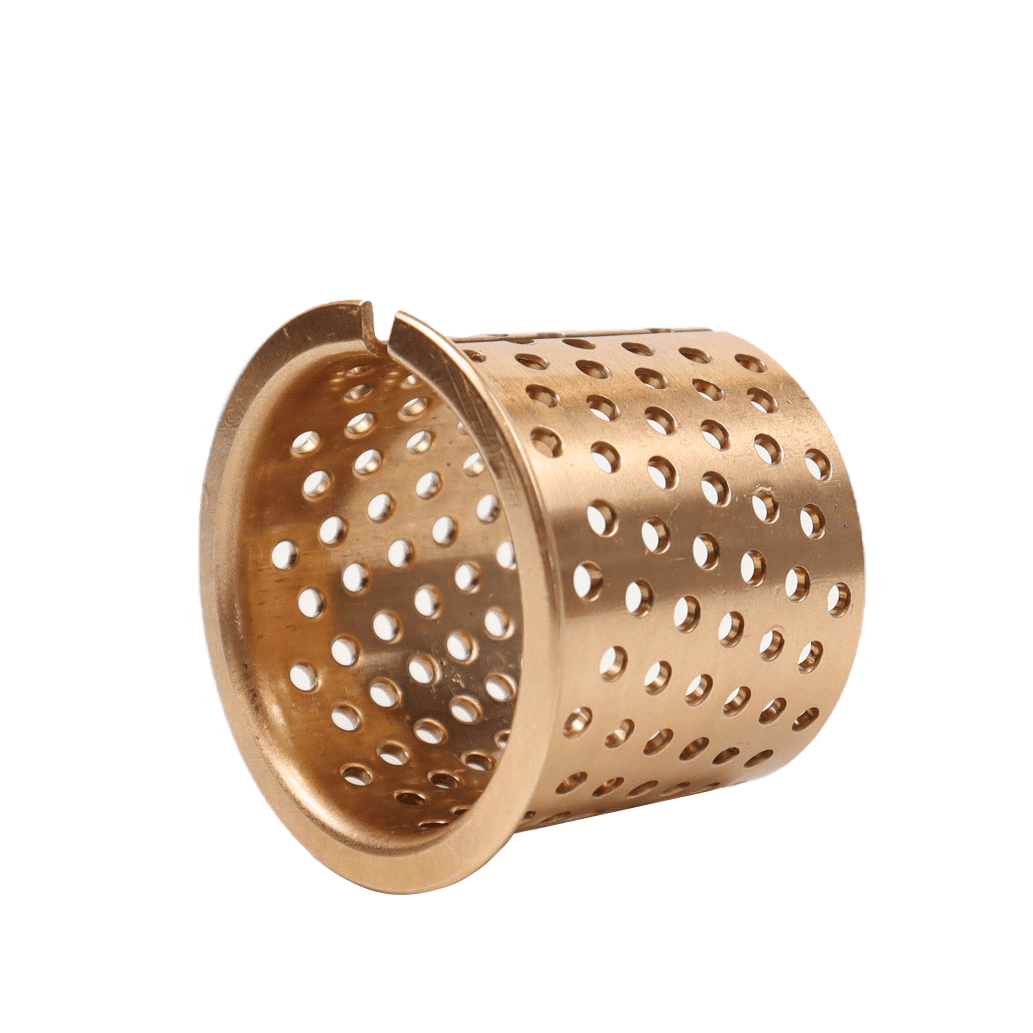
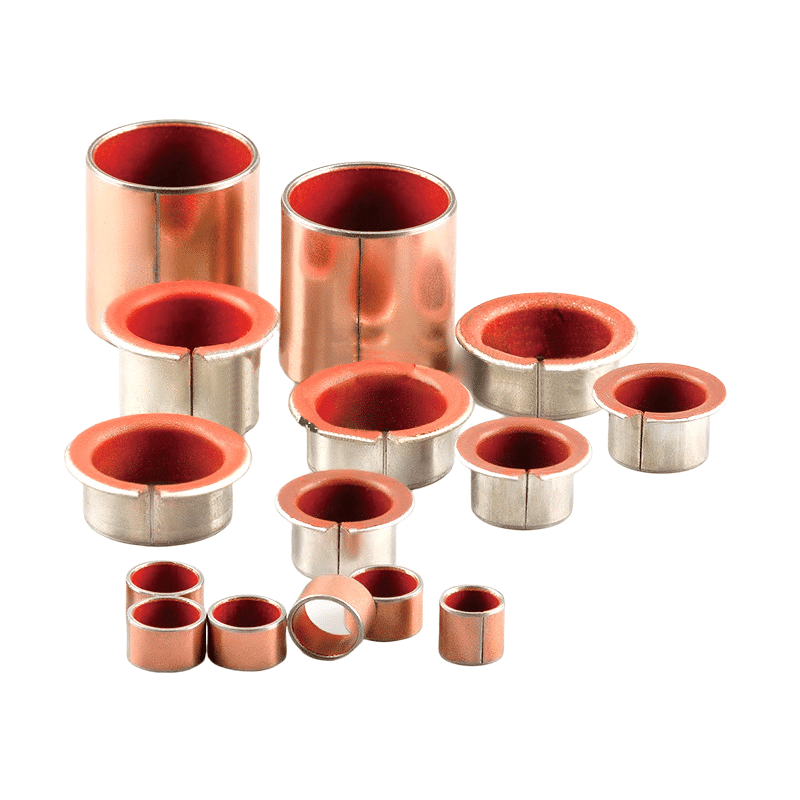
Discover deals on self-lubricating flange bearing bushings from China—inquiring is easy!
Sourcing self-lubricating flange bearings bushings from China.
China is a leading producer of self-lubricating flange bearing bushings and provides an extensive assortment of high-quality, cost-effective products to meet diverse application requirements. Prior to making any purchasing decision, be sure to verify that the chosen supplier demonstrates a proven track record of consistent, reliable manufacturing processes as well as responsive, customer-focused service, so you can have confidence in the long-term performance and support that accompany your order from start to finish.

Save Time and Money with Self-Lubricating Flange Bearings Bushings from China. Order Today!
Cylindrical bushings with flange – bronzelube.com
Bronzelube Self-Lubricating Flange Bushes is a specialized manufacturer that produces robust, flanged cylindrical bushings engineered to deliver consistent, reliable and cost-effective performance across a wide range of varied applications. Because each bushing is fabricated from advanced, high-performance polymer materials, the components provide numerous, well-recognized advantages when compared with traditional, conventional metal bearing solutions.
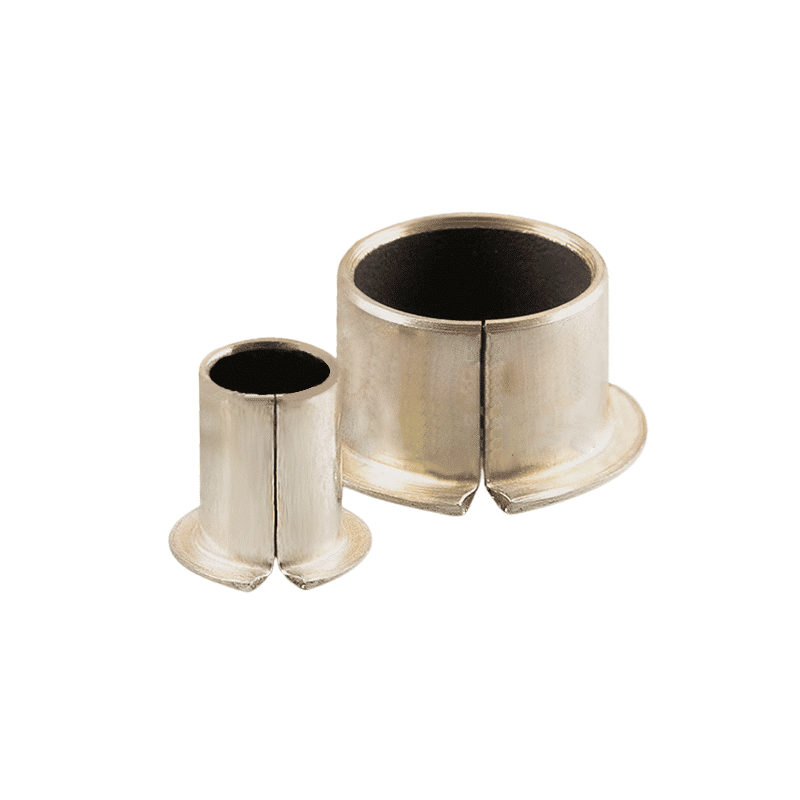
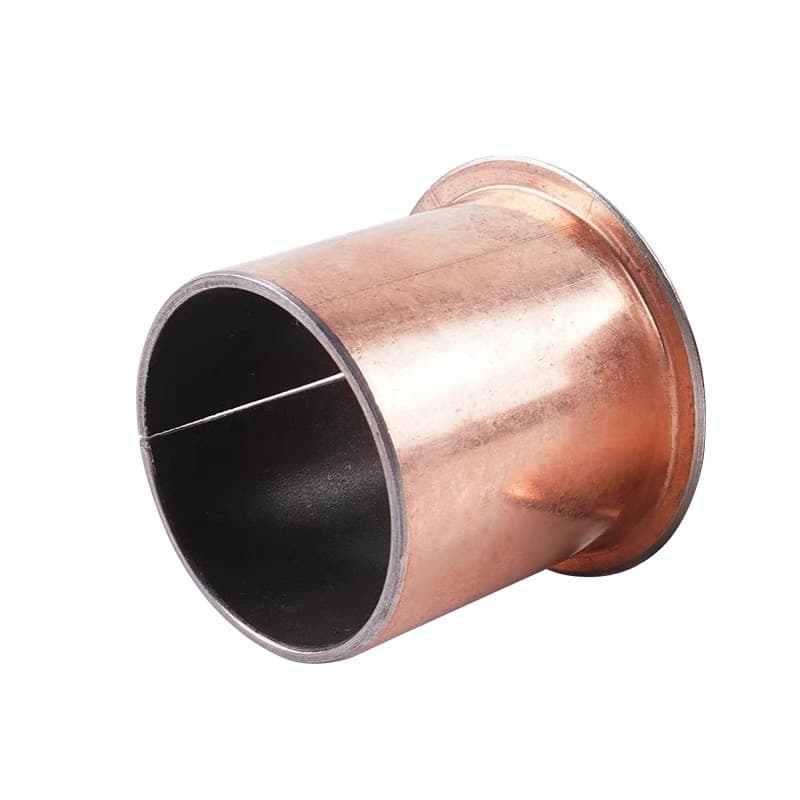
High-Quality Self-Lubricating Flange Bearing
Benefits of self-lubricating flange bearing bushing
Experience the advantages of our self-lubricating flange bearing bushings—order now. Compared with traditional lubricated bearings, these bushings deliver superior performance and, when sourced from China, can be highly cost-effective. Before buying, assess material, manufacturing quality, inspection standards, lead times, price, minimum order, and payment terms. We streamline this process with a wide selection, competitive pricing, clear specifications, and reliable service. Contact us today.
Cost saving, choose our flange bearing bushings
Cost is important, but it shouldn’t be the only factor when selecting a flange bearing bush supplier. Very low prices can reflect inferior products or service, so aim for a supplier that combines fair pricing with high-quality components and dependable support.
The supplier you choose directly affects the performance and lifespan of your flange bearing bushes. Assess each candidate’s reputation, product quality, customization options, technical expertise, delivery reliability, lead times, and cost. Careful evaluation will help you secure a trustworthy partner, prevent future issues, and protect the long-term success of your projects and equipment.
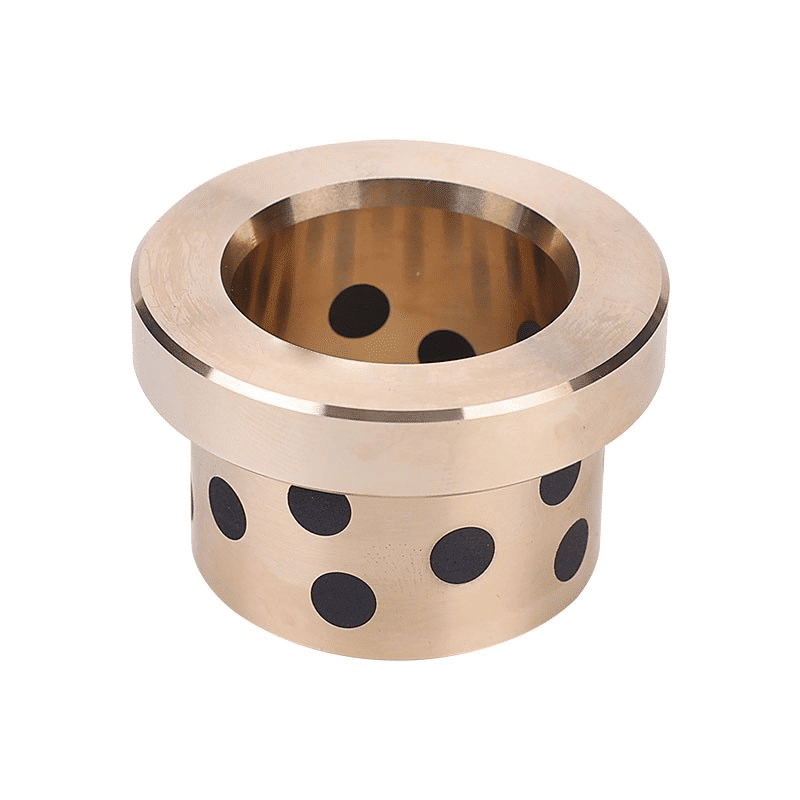
Unlocking Peak Performance: A Deep Dive into Self-Lubricating Flange Bearing Bushings
In the intricate world of machinery and moving parts, unsung heroes work tirelessly to ensure smooth, efficient, and long-lasting operation. Among these crucial components are bushings, and more specifically, the highly versatile flange bearing bushings. When these are engineered to be self-lubricating, they offer a paradigm shift in maintenance, performance, and operational cost.
As manufacturers specializing in custom material flange bearings bushing tailored to your individual needs, we understand the nuances that make these components critical. Let’s delve into the world of flange bearing bushings, exploring their types, benefits, and crucial considerations for optimal performance.
What Exactly is a Bushing?
At its core, a bushing (also known as a plain bearing or sleeve bearing) is a cylindrical component designed to reduce friction and wear between two moving parts, typically a rotating or sliding shaft and its housing. It provides a sacrificial surface that is easier and cheaper to replace than the shaft or housing itself.
The Flange Advantage: Understanding Flange Bearing Bushings
A flange bearing bushing takes this concept a step further. It’s essentially a cylindrical bushing with a flange (a projecting rim or lip) at one end. This flange serves several key purposes:
-
Axial Location: It provides a positive stop, accurately locating the bearing within its housing.
-
Thrust Load Bearing: The flange can bear axial (thrust) loads, preventing movement along the shaft’s axis.
-
Simplified Assembly: It often makes installation easier and more secure.
The Magic of Self-Lubrication
Traditional bearings often require an external lubrication source (grease or oil) applied regularly. Self-lubricating flange bearing bushings, however, are designed to operate effectively without this constant external intervention. This “magic” comes from the material composition itself:
-
Sintered Metals (e.g., Bronze): These are porous materials, typically bronze or iron, impregnated with oil during manufacturing. As the shaft rotates, a thin film of this lubricant is drawn out to the surface.
-
Polymer Bushings (e.g., PTFE, Nylon, PEEK): Many plastics have inherently low friction coefficients. Some, like PTFE , are exceptionally slick. Others might have solid lubricants (like graphite or MoS₂) embedded within the polymer matrix, which are released during operation. This is often referred to as the “Plastic Bushings: The Self-Lubricating Effect.”
-
Composite Bushings: These often feature a metal backing (like steel or bronze) for strength and a lining of self-lubricating material (e.g., PTFE-based layer) on the sliding surface. Our Bronzelube line often falls into this high-performance category.
Sizing It Up: Metric vs. Inch Self-Lubricating Flange Bearing Bushings
Choosing the correct size is paramount. We offer both metric and inch sizes for self-lubricating flange bearing bushings to cater to diverse global standards and application needs.
Metric Size:
Self-lubricating flange bushings are available in metric sizes, expressed in millimeters (mm). Dimensions include the inside diameter (ID), outside diameter (OD), length, and flange thickness/diameter. Metric sizes can range from a few millimeters to several hundred millimeters, offering precision for a vast array of equipment.
Inch Size:
Similarly, inch sizes are expressed in inches (“). Dimensions cover ID, OD, length, and flange parameters. These can range from fractions of an inch to several inches, common in North American machinery and specific industries.
Here’s a quick comparison:
| Feature | Metric Size | Inch Size |
| Unit | Millimeters (mm) | Inches (“) |
| Common ID/OD | Small (few mm) to large (hundreds mm) | Small (fractions) to large (several inches) |
| Global Usage | Widely adopted internationally | Predominant in US & some specific industries |
| Precision | Can offer very fine gradations | Standard fractional/decimal increments |
| Typical Dimensions | ID, OD, Length, Flange Thickness, Flange OD | ID, OD, Length, Flange Thickness, Flange OD |
Both metric and inch size self-lubricating flange bushings can be manufactured from various materials, including sintered bronze, brass, steel (often as a backing), and various plastics/polymers. The choice depends heavily on application demands like load, speed, temperature, and chemical environment.
The Material World: Choosing the Right Stuff
The material of your flange bushing dictates its performance. Let’s compare some common options:
| Material | Key Characteristics | Best For | Considerations |
| Sintered Bronze (Oil-Impregnated) | Good wear resistance, self-lubricating, moderate load & speed capability. | General purpose, moderate load/speed applications, good embeddability. | Can require initial run-in, temperature limits for oil. |
| Solid Polymers (e.g., Nylon, PTFE, PEEK, Acetal) | Excellent low friction, corrosion/chemical resistant, lightweight, quiet operation. | Food grade, chemical exposure, low noise, low load/speed applications. | Lower load capacity than metals, thermal expansion. |
| Composite (e.g., Bronzelube – Metal-Backed Polymer Lined) | High load capacity, excellent wear resistance, low friction, dimensional stability. | Heavy-duty, high-wear, high-load, wide temperature range applications. | Can be more expensive, specific fitting requirements. |
| Brass | Good corrosion resistance (especially marine), moderate strength. | Marine environments, some electrical applications. | Softer than bronze/steel, lower load capacity. |
| Steel (often as backing for composites or with specialized liners) | High strength, very high load capacity, good for structural support. | Extremely heavy loads, structural integrity (typically needs a liner). | Prone to corrosion without treatment/liner, not inherently self-lubricating. |
Unpacking the Benefits: Why Choose Self-Lubricating Flange Bearing Bushings?
The advantages are compelling, translating to better performance and reduced operational headaches:
-
Low Maintenance: This is the star attraction. No regular greasing or oiling means less downtime, reduced labor costs, and cleaner operation.
-
Reduced Friction: Inherently low-friction materials or embedded lubricants minimize resistance, leading to smoother operation, reduced energy consumption, and less heat generation.
-
Increased Service Life: Reduced wear and tear directly translates to a longer operational lifespan for both the bushing and the components it protects.
-
Corrosion Resistance: Many self-lubricating materials (especially polymers and some bronzes) are highly resistant to corrosion, making them ideal for harsh or wet environments.
-
Quiet Operation: Lower friction and the dampening properties of some materials (like polymers) contribute to significantly quieter machinery.
-
Cost-Effective: While the initial cost might sometimes be higher than a basic greased bearing, the total cost of ownership is often much lower due to reduced maintenance, longer life, and fewer failures.
-
Customization: As we specialize in, these bushings can be tailored to specific application requirements in terms of size, material, and design features.
Our Bronzelube self-lubricating flange bushes (cylindrical bushings with flange) exemplify these benefits, offering a robust solution by combining high-performance polymers with durable backing materials for demanding applications.
Avoiding Damage: Critical Care for Flange Bearing Bushings
Even the best bushings can fail if not treated correctly. Here’s how to avoid common pitfalls:
-
Proper Installation & Housing Hole Design:
-
Perpendicularity: The housing bore must be perpendicular to the mounting surface. If not, the flange won’t sit flat, leading to uneven stress, deformation, or even fracture.
-
Burr-Free & Chamfered: The hole must be free of burrs. A small chamfer (e.g., 0.5mm to 1mm) on the edge of the housing hole helps prevent damage during insertion and ensures the bushing seats correctly. An excessively large chamfer can reduce the load-bearing surface.
-
Correct Size & Tolerance: The housing hole should meet the recommended size and tolerance (often H7 for a press-fit) to ensure a secure fit without damaging the bushing or allowing it to spin.
-
Surface Finish: A smooth surface finish (typically 0.8 to 1.6 microns Ra) in the housing bore is crucial to prevent scoring the bushing OD.
-
-
Lubrication (for non-self-lubricating types, or initial setup): While we focus on self-lubricating, if traditional types are used, correct type, amount, and frequency are vital. For self-lubricating, ensure no incompatible greases are introduced that might degrade the self-lubricating properties.
-
Monitoring: Regularly check for unusual noise, vibration, excessive heat, or signs of wear. Early detection prevents catastrophic failures.
-
Avoid Excessive Loads:
-
Respect Load Ratings: Understand the radial, axial, and combined load capacities of your chosen bushing. Overloading causes premature wear and failure.
-
Edge Loading: This is a major killer. Misalignment (due to tolerances, multiple bearing points, or shaft deflection) or torsional/tilting moments can concentrate stress on the edge of the bushing or flange. This can shear the flange from the cylindrical body.
-
Safety Factor: Always apply an appropriate safety factor to the calculated load capacity based on the application’s criticality and operating conditions.
-
-
Avoid Contamination: Dirt, dust, and process debris are abrasive. Protect bushings with seals or covers where possible. Keep the operating environment clean.
-
Regular Maintenance (System-Level): While self-lubricating bushings reduce their own maintenance, the overall machine still needs it. Check alignments, look for external damage, etc.
The Housing Hole: A Foundation for Success
The design of the housing hole is non-negotiable for optimal flange bearing bush performance.
| Housing Hole Factor | Importance | Recommendation |
| Perpendicularity | Ensures flange sits flat, even load distribution. | Machine bore accurately perpendicular to mounting face. |
| Size & Tolerance | Secure fit, proper interference for press-fit. | Typically H7 tolerance. Consult manufacturer specs. |
| Surface Finish | Prevents scoring of bushing OD, ensures good contact. | 0.8 – 1.6 µm Ra (32-63 µin Ra). |
| Chamfer/Lead-in | Eases installation, prevents shaving/damage to bushing. | 0.5mm to 1mm at 15-30 degrees. Avoid over-chamfering. |
| No Burrs | Burrs can damage bushing, alter dimensions, prevent proper seating. | Deburr thoroughly after machining. |
| Lubrication Access | For some designs, allows lubricant to reach bearing surfaces (if needed). | Design for effective lubrication distribution if applicable. |
| Secure Mounting | Flange must fit securely; no obstructions or misalignments. | Ensure clear, flat seat for the flange. |
Understanding Loads: More Than Just a Number
The load a flange bearing bush experiences is multifaceted:
-
Radial Load: Force perpendicular to the shaft axis.
-
Axial Load (Thrust Load): Force parallel to the shaft axis, primarily handled by the flange.
-
Combined Load: Simultaneous radial and axial loads.
-
Edge Loading: Caused by shaft deflection or misalignment, this concentrates force on the edge of the bearing or the flange-body junction, potentially leading to shear failure or accelerated wear. If multiple bearing points are in sequence, alignment errors are a common culprit.
-
Torsional/Tilting Moments: If the load is applied off-center relative to the bearing, it can create tilting moments, leading to edge loading and adverse stresses.
Always consider operating conditions (temperature, speed, vibration) as they can influence a bearing’s effective load capacity.
When Standard Flanges Don’t Cut It: The “Uncouple” Solution
Sometimes, despite best efforts, the housing design or the nature of the loads (significant tilting moments) makes a standard flanged bushing unsuitable. If all else fails, uncouple.
This means opting for a two-component solution:
-
Use a simple cylindrical bushing to handle radial loads.
-
Add a separate thrust washer to manage axial loads.
This allows each component to absorb forces independently.
-
Advantages: Better accommodation of misalignment and complex loads.
-
Disadvantages: More complex assembly, potentially slightly higher cost due to multiple parts, and more components to manage.
Other advanced options include two-piece flanged bearings or double-flanged solid polymer bearings for specific challenging scenarios.
Partnering for Success: The Value of Technical Expertise
Choosing the right flange bearing bushing isn’t just about picking a size from a catalog. It’s about understanding the application’s unique demands. A supplier with technical expertise is invaluable. Look for:
-
Experienced engineers and technical staff.
-
Ability to provide guidance on material selection and design.
-
Capacity for custom manufacturing to create flange bearing bushings perfectly tailored to your individual needs.
Conclusion: Powering Progress with Precision Bushings
Self-lubricating flange bearing bushings are more than just components; they are enablers of efficiency, reliability, and innovation. By understanding their materials, design considerations, and proper application, you can significantly enhance the performance and lifespan of your machinery. Whether you need standard metric or inch sizes, or a completely custom solution, the right flange bearing bushing is key to smooth operation.
Ready to optimize your application with high-performance flange bearing bushings? Contact us today to discuss your custom requirements and let our technical expertise guide you to the perfect solution!
Partnering for Success: The Value of Technical Expertise & Choosing Your Supplier
Choosing the right flange bearing bushing isn’t just about picking a size from a catalog, especially when you require custom bushing solutions. It’s about understanding the application’s unique demands. A supplier with technical expertise is invaluable. Look for:
-
Experienced engineers and technical staff.
-
Ability to provide guidance on material selection and design.
-
Capacity for custom manufacturing to create flange bearing bushings perfectly tailored to your individual needs.
Furthermore, when selecting a partner for these critical components, choose a supplier with a solid reputation backed by positive reviews and references. This due diligence ensures you’re working with a provider committed to quality and customer satisfaction.
(New section created from your input, placed before the final conclusion)
Your Flanged Bearing Bush Selection Checklist: Ensuring Precision and Longevity
A flanged bearing bush is engineered to support both radial and axial loads. Its design, which often allows it to be bolted securely into its housing, makes it exceptionally well-suited for precision machinery where accuracy and stability are paramount.
To select the right unit and ensure optimal performance, meticulously consider the following:
-
Load Capacity: Critically assess the expected forces (radial, axial, and any combined or shock loads). Match the bushing’s size, material, and design to these forces to prevent premature wear or catastrophic failure. An undersized or inappropriately specified bushing is a common point of failure.
-
Material: The choice of material (e.g., steel alloys, various bronzes, advanced polymers like PEEK or PTFE, composites) is fundamental. Pick based on requirements for:
-
Corrosion Resistance: Essential in humid, chemical, or washdown environments.
-
Temperature Limits: Ensure the material can withstand the operating temperature range without degradation or excessive thermal expansion.
-
Strength & Hardness: Necessary to bear loads without deformation and resist wear.
-
-
Lubrication:
-
For self-lubricating bushings, understand the inherent lubrication mechanism (e.g., oil impregnation, solid lubricant dispersion, low-friction polymer matrix) and ensure it’s suitable for the application’s demands.
-
If your application involves external lubricants (either as the primary method for traditional bearings or as a supplementary/assembly aid for some self-lubricating types), confirm compatibility with the oil or grease your application requires. Incompatible lubricants can degrade bearing materials or interfere with self-lubricating properties.
-
-
Dimensions & Fit: Precision is key.
-
Bearing Dimensions: Ensure the inside diameter (ID), outside diameter (OD), and length meet shaft and housing specifications.
-
Flange Dimensions: The flange diameter and thickness must fit the housing recess or mounting surface exactly to ensure proper axial location and load support.
-
Tolerances: Pay close attention to recommended housing bore and shaft tolerances to achieve the correct fit (e.g., press fit, clearance fit) and avoid misalignment, which can cause edge loading and premature failure.
-
-
Operating Environment: Beyond general temperature and corrosion, verify the bushing’s performance under all anticipated conditions:
-
Specific Chemicals: Resistance to solvents, acids, bases, or other process fluids.
-
Contaminants: Ability to withstand or be protected from dust, dirt, moisture, and other abrasive or corrosive particles.
-
Vibration & Speed: Ensure the chosen bushing can handle the dynamic conditions of the application.
-
A thorough review of these factors, ideally in consultation with an experienced supplier, will help you select or design a flanged bearing bush that delivers reliable, long-lasting performance in your specific application.
BUSHING DEAIGN
Custom Flange Bearing Bushing We are happy to assist you!
Because every application is unique, select a flange bearing bush supplier that can tailor materials, sizes, and configurations to your needs. Timely, dependable delivery with short lead times is essential to keep projects on schedule and minimize downtime. We guide you through every stage of your flange bushing—from choosing the ideal design and production method to final implementation and delivery. Contact us today.
High Quality Bushing
Flange bearing bush quality dictates performance and lifespan. Select suppliers that provide durable components engineered for your operating conditions.
Flange bearing supplier
Choosing the right flange bearing bush supplier is essential for quality and performance.

Solutions For Every Industry
Searching for Dependable Bushing Solutions? viiplus Has What You Need.

Design Guides, Materials
Bushing design, Comprehensive design manuals covering a range of self-lubricating materials used in all of viiplus’s manufacturing processes.

Technical Guides
Manufacturing On Demand, Technical Guides For Machining Design. Discover the latest in metal alloys, materials, and design tips for manufacturing custom machined and self-lubricating bearing parts.

Get Instant Quote
To receive your instant quote, simply upload your drawing file and choose your production process & bushing material.

Prototyping, Place Order
After you place your order, we will start the production process. You will receive updates when your order has completed production and is ready to be dispatched.

Receive Your custom Parts
We provide precision-inspected high-quality parts, packing lists and documents, and delivery tracking.

